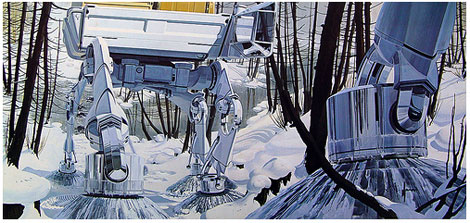
Text below from Syd Mead's book SENTINEL
The four-legged, gyro-balanced, walking cargo vehicle shown on pages 80-81 is from the US Steel Interface portfolio series [published in 1969 – see image below]. The environment is arctic and the mission is to deliver goods and critical supplies to an isolated exploratory colony beyond the DEWline. Like several of the preceding designs, the 'feet' can be rotated and locked to form powered wheels for rolling over smooth terrain but, seen here in the walking mode, they are covered with ice that is breaking up into radial slivers as the pneumatic pods flex. Defining this part of the design concept more closely, Mead explains that "the largest land animal now extant is the elephant. As he puts his weight on each foot the metacarpals and tarsals fan out from the ankle and the foot spreads, distributing the pressure. Conversely, as the weight is retracted the foot contracts and never gets stuck in the mud. The same principle was incorporated here; the 'foot' structure would be alternately inflated and deflated in the walking mode to duplicate the natural function of the elephant's foot. As a matter of fact, when I did this the US Government had already funded a military project for a walking machine [RH-2010 – the GE Walking Truck] and had built an analog computer-co-ordinated prototype that successfully walked over loosely stacked railroad ties. The seated driver not only operated extremely sensitive hand and foot controls that duplicated and amplified his motions, but also had calculated feedback that allowed him to 'feel' the feet making ground contact!"
Note – RH 2010 – With the slender, flat-sided legs and gimballed feet, its easy to see where the Star Wars [1980] AT-AT designers got their inspiration from.
Update: 17 May 2010 – I located this interview given by Joe Johnston, who worked for ILM during the production of Star Wars.
BTL = Below The Line
Former Industrial Light and Magic art director Joe Johnston became a feature film director over 20 years ago when he came aboard Honey, I Shrunk the Kids and has not looked back.
BTL: What aspect of being the Industrial Light and Magic art director informed your career as a film director?
Johnston: I was the storyboard guy on all three Star Wars films with help from my guys in the art department. It was being able to go into the cutting room with George Lucas to do storyboards to alter these sequences. We’d need a new board for this moment. I’d ask why, and he’d explain it. He was not only generous with his knowledge. It was like being in an intense one-on-one film school. That was more responsible for me getting into directing. He started letting me direct second unit in the mid ’80s. Then I went to USC for a year. It was the input with George in the cutting room that inspired me to want to be a director.
BTL: What were your proudest moments from your time at ILM?
Johnston: Even though I was art director, what we were mostly doing was designing spaceships, with some environments, costumes and creatures. George would come to us and say, we need a vehicle that transports the Imperial troopers from their landing site to the rebel base. We would do drawings. George had three rubber stamps – wonderful, Ok and not OK. We came up with the snow walker. That is my favorite of all the designs that I did. On Star Wars it was me and Ralph McQuarrie at home doing illustrations. The X-Wing, Y-Wing and Millennium Falcon were my design. Empire was my most rewarding. The snow walkers were from a brochure by Syd Mead for US Steel of these walking trucks going through the snow – we turned them into walking tanks.
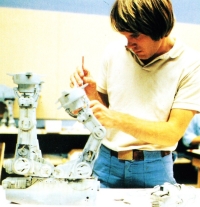
Then Designer for ILM, Joe Johnston paints the snow walker.
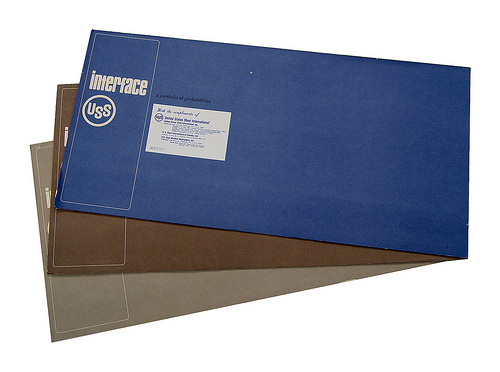
US Steel Interface portfolio series 1969.

The Walking cargo vehicle idea is revised and used again in 1984, published in another of his illustrated books, "Oblagon: Concepts of Syd Mead," showing cargo carriers clumping across a moonscape on robotic legs, moving like steel elephants. The contraction of the foot as it retracts is more evident in this illustration than the original 1969 version.
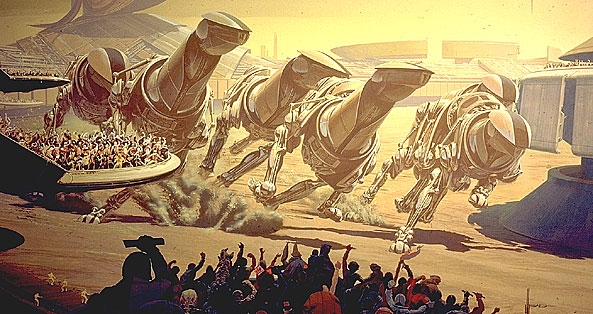
Running of the Six Drgxx, 1983, Kronoteko DRGXX are 160' tall.
The Running of the Six DRGXX: (Bottom) – This was done as one of publicity posters for the First (and last, as it turned out) Tokyo International Sport Fair [1983]. It features six 120 foot high automated, robot DRGXX (the 'R' is backwards in the actual title; the double 'XX' is pronounced like the soft French 'X,' and the coloration is a muted series of ochres, darkish browns and cooler greys. The picture is also one we are asked about most frequently. It has extraordinary retention impact. It can be viewed as an example from the publication "KRONOTEKO".
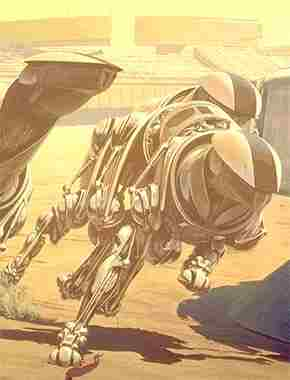
Later, Syd Mead designed one of the floors (called Dimension III: Gammon 3) of the entertainment building "Dr. Jeekhans", in Tokyo (c1990). He designed a casino-looking racing game with unique creatures called "Racimals". The game looks like a miniature version of the "Running of the Six Drgxx".
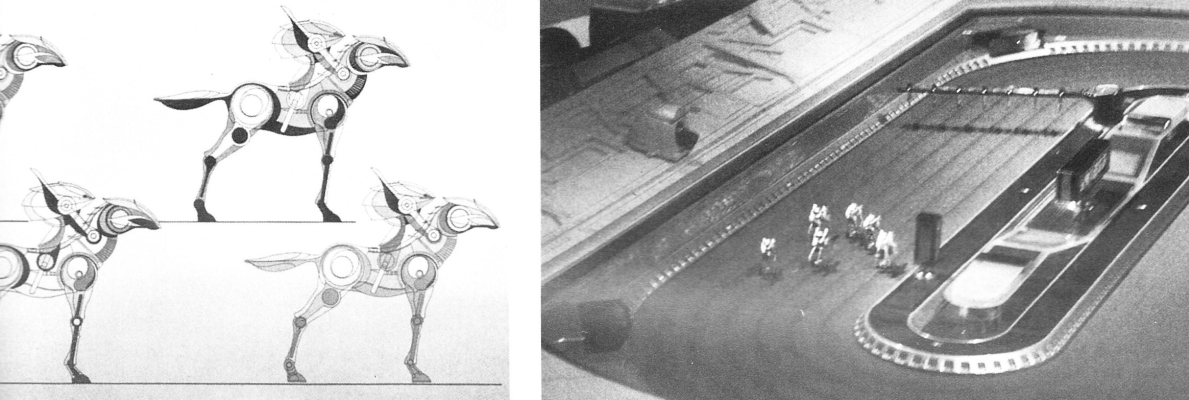
Just to complete Syd Mead's Walkers in one post, here's a conceptual drawing he made for the "Power Loader" in the movie "Aliens".
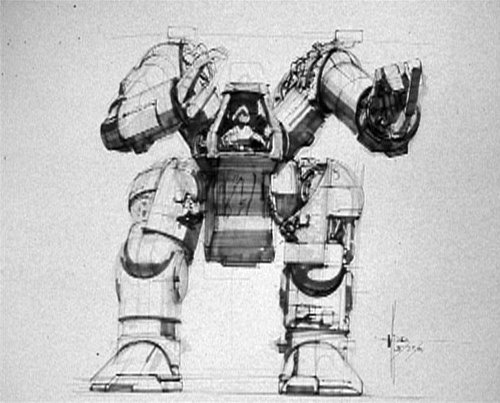
Both, but spans 2 pages.
Hi, can you confirm whether the ’69 Walking Cargo Vehicle comes from Steel Couture: Futurist Sentinel, or Steel Couture: Sentinel II?
If I’m going to track down the book, I want to make sure I’m chasing the right one.
Thanks